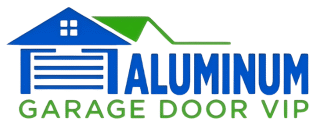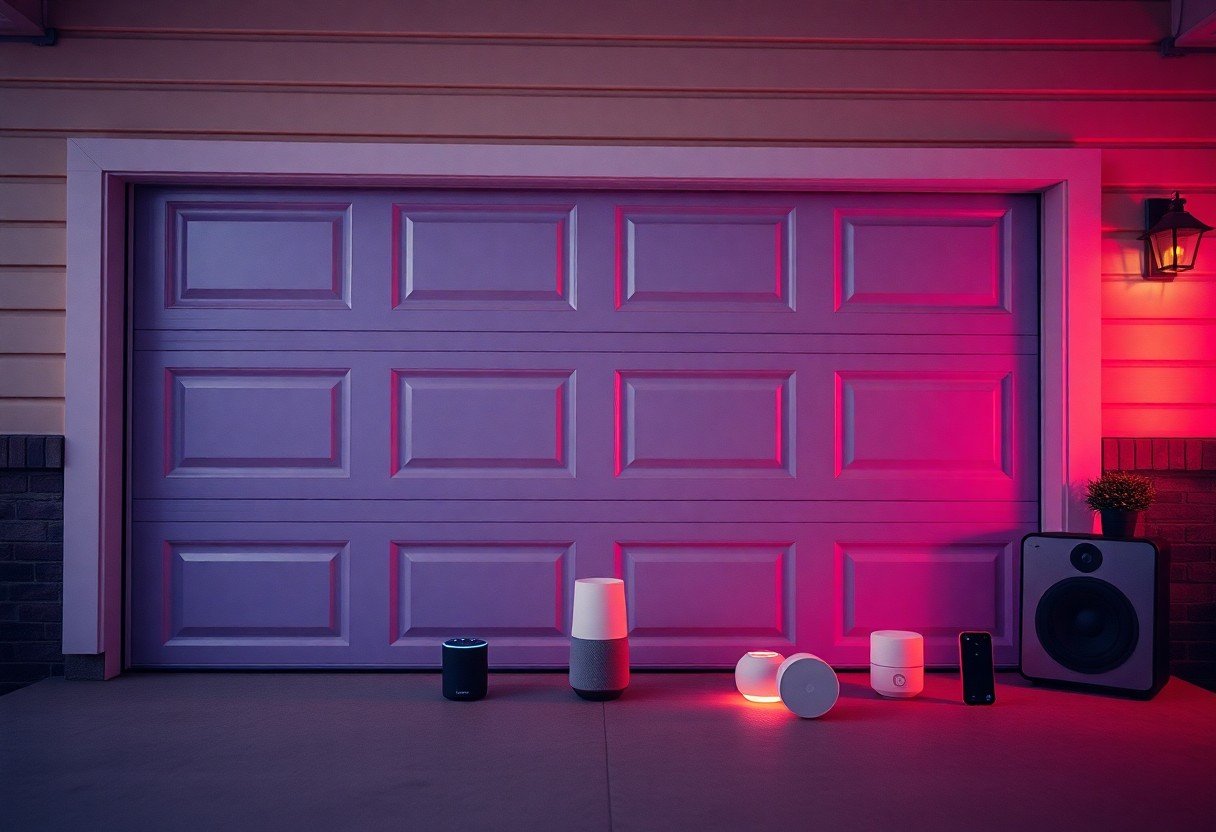
How to Connect Your Garage Door to Alexa, Google, or Apple HomeKit
Most homeowners today enjoy the convenience of smart home technology, and integrating your garage door with systems like Alexa, Google Assistant, or Apple HomeKit is easier than you might think. By following simple steps, you can enable voice control and add another layer of automation to your daily routine. In this guide, you’ll discover how to connect your garage door opener to your preferred smart home ecosystem, enhancing both functionality and security in your home.
Key Takeaways:
- Choose compatible smart garage door openers or hubs that work seamlessly with Alexa, Google Assistant, or Apple HomeKit for easy integration.
- Follow the manufacturer’s guidelines for setup, which typically involve downloading an app, connecting your device to Wi-Fi, and linking it to your desired voice assistant.
- Utilize voice commands after setting up, enabling you to open or close your garage door hands-free for added convenience and security.
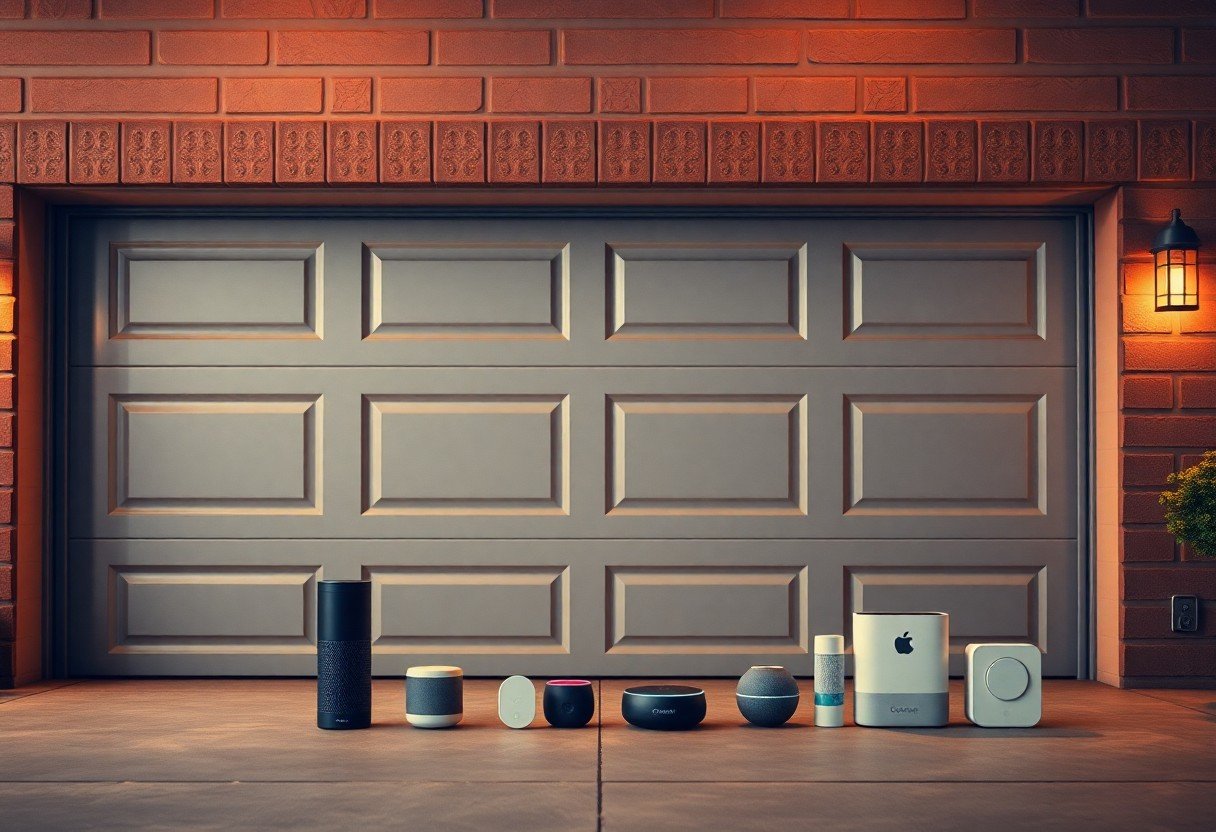
The Prerequisites: What You Need to Get Started
Compatible Garage Door Opener Models
To successfully connect your garage door to smart home systems like Alexa, Google Assistant, or Apple HomeKit, you need a compatible garage door opener. Most modern smart openers from brands like Chamberlain, LiftMaster, and Genie offer Wi-Fi capabilities and integration with these platforms. Check your opener’s model number and manufacturer specifications to ensure it supports app connectivity and voice control.
Smart Home Hub Requirements
Having a proper smart home hub is integral to leveraging your voice assistant’s capabilities effectively. For instance, if you are using Apple HomeKit, you will require a HomePod, Apple TV, or an iPad that remains on your home network, acting as the hub. For Google Home or Amazon Alexa, any compatible smart speaker can serve this purpose, allowing you to control your garage door remotely.
Specifically, smart home hubs coordinate between your devices and the voice assistants to relay commands, so setup needs to be seamless. Make sure your hub is connected to a stable Wi-Fi network, with the garage door opener within range. In some cases, third-party hubs like Samsung SmartThings can be used if they support your opener model, offering increased compatibility and features, such as scenarios for automation. Connecting through a hub not only enhances functionality but also increases security and reliability in managing your garage door remotely.
Navigating Smart Home Ecosystems: Alexa, Google Assistant, and Apple HomeKit
Unique Features of Each Platform
Alexa, Google Assistant, and Apple HomeKit each offer distinct features that cater to various user preferences. Alexa excels in third-party integrations, boasting a vast array of compatible devices and skills. Google Assistant provides exceptional voice recognition and context awareness, making it ideal for conversational interactions. In contrast, Apple HomeKit emphasizes security and privacy, offering robust encryption and seamless integration with iOS devices, ensuring that your connections are secure at all times.
Choosing the Right Smart Assistant for Your Needs
Your smart home assistant should align with your lifestyle and preferences. Assess factors such as device compatibility, user interface preference, and the platform’s ecosystem. For instance, if you already own Apple devices, HomeKit may be the most intuitive choice. On the other hand, if you prioritize voice control and a broader range of products, Alexa could be more suitable. Additionally, consider whether you value the privacy measures of Apple HomeKit or the flexibility and customization options found in Google Assistant.
Make your decision by evaluating what matters most to you in a smart home experience. If you’re heavily invested in a specific ecosystem, such as Apple’s, going with HomeKit provides seamless operation across your devices. Alternatively, if versatility and third-party device compatibility top your wishlist, Alexa might be your best bet. Always consider long-term needs, as switching platforms can lead to additional costs and complexities down the line, so choose wisely to ensure a harmonious smart home environment.
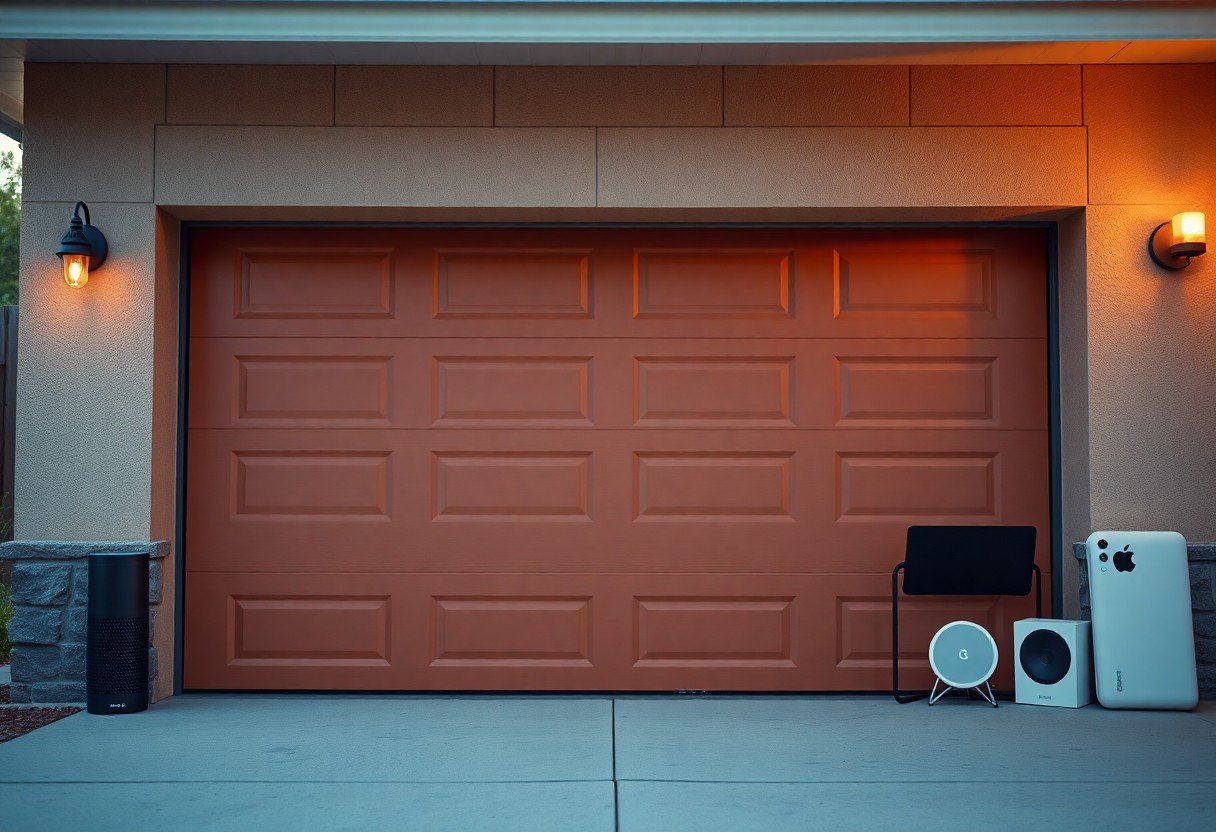
Preparing Your Garage Door for Connectivity
Updating Firmware and Software
Start by checking for any firmware and software updates available for your garage door opener. Most modern smart devices come with an app that will notify you of updates. Keeping your garage door opener up-to-date ensures it functions correctly within your chosen smart home ecosystem and takes advantage of the latest features and security improvements.
Installing Required Hardware Components
Before connecting your garage door to a smart home assistant, you’ll need to install specific hardware components. Depending on your garage door system, this might include a smart garage door controller or adapter that bridges your opener to Wi-Fi. These devices usually connect directly to your garage door motor or existing wall control system, enabling wireless functionality for convenient operation.
For instance, products like the Chamberlain MyQ Smart Garage Hub or the Nexx Garage Smart Controller are popular choices that allow for easy integration with Alexa, Google Assistant, or Apple HomeKit. Installation varies slightly among brands, but generally, you’ll connect these devices to your power outlet and configure them according to the manufacturer’s instructions. Some models might require a simple mounting process on the garage wall, while others might need connecting wires to your existing garage opener. Always consult the installation manual for specific steps tailored to your chosen device.
Step-by-Step Setup for Alexa Integration
| Step | Description |
| 1 | Ensure your garage door opener is compatible with Alexa. |
| 2 | Download and install the associated app for your garage door opener. |
| 3 | Enable the Smart Garage Door Skill in the Alexa app. |
| 4 | Link your garage door app to your Amazon account. |
| 5 | Customize voice commands for ease of use. |
Enabling the Smart Garage Door Skill
Open the Alexa app on your smartphone, navigate to the “Skills & Games” section, and search for the Smart Garage Door Skill. Once you find it, tap “Enable” to allow Alexa to interact with your garage door opener. Follow any prompts to complete the activation process, ensuring that permissions are granted so Alexa can operate your device seamlessly.
Linking to Your Amazon Account
After enabling the Smart Garage Door Skill, you will need to link it to your Amazon account. This process typically involves logging into your garage door opener app within the Alexa interface. By connecting the two accounts, you create a bridge that allows Alexa to send commands directly to your garage door, providing you with real-time control.
Linking your accounts forms the backbone of this integration. You’ll need to provide your login credentials for the garage door opener app, which may also require verifying your identity through a temporary code sent to your email or phone. It’s important to follow these steps carefully to ensure a smooth connection.
Voice Command Customization
Once your accounts are linked, customizing voice commands can enhance your experience. You can specify unique commands for opening or closing your garage door, adjusting how you prefer to interact with your device. This can simplify your daily routines and improve overall convenience.
Vocal variations can help ensure commands are intuitive. For example, you might alter the standard “open garage door” command to something more personal like “let the car in.” This customization allows for a more tailored interaction, ensuring Alexa understands your unique requests with ease. Taking advantage of this feature can make your smart home experience more seamless and enjoyable.
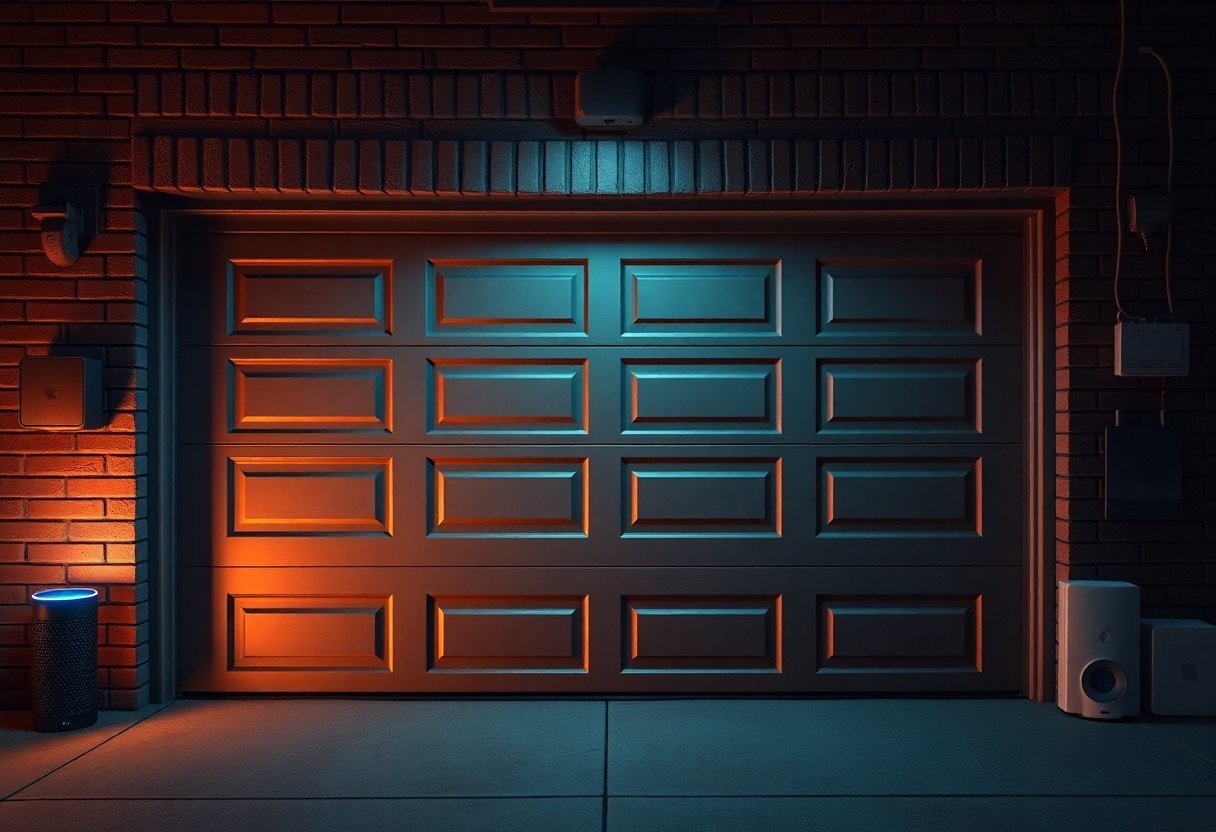
Seamless Google Assistant Configuration
Linking Google Home to Compatible Devices
Start by opening your Google Home app and tapping on the “+” icon to add a new device. From there, select “Set up device” and choose “Works with Google.” You can search for your specific garage door opener brand or find it through the list. After logging in with your account credentials for the garage door service, you will be prompted to give Google Assistant permission to access the device. Once linked, your garage door opener will be integrated into your Google Home ecosystem, making it ready for voice commands.
Setting Up Voice Commands for Garage Access
With the garage door linked, you can create custom voice commands to control your garage access. You can initiate simple commands such as “Hey Google, open the garage” or “Close the garage door.” These commands provide a quick and convenient way to manage your garage without needing to pull out your phone or use a remote. In addition, consider creating routines, allowing multiple commands to be executed through a single prompt. For example, you can create a routine where saying “I’m home” not only opens the garage door but also turns on your porch lights.
To enhance usability and ensure smooth operation, it’s beneficial to regularly test your voice commands after setting them up. You might want to adjust your phrasing to find what resonates best with Google Assistant’s recognition capabilities. Additionally, if you have multiple garage doors, specify which one you want to operate in your commands, such as “Open the left garage door.” This specificity aids in reducing misunderstandings and ensures your commands are executed accurately each time.
Integrating Your Garage Door with Apple HomeKit
Setting Up HomeKit with Your Garage Door
To connect your garage door to Apple HomeKit, you’ll need a compatible garage door opener, such as the Smart Wi-Fi Garage Door Opener, Compatible with Apple. Begin by downloading the manufacturer’s app, then follow the on-screen instructions to add the device to your HomeKit setup. This typically involves scanning a HomeKit setup code that comes with your opener to establish a secure connection.
Creating Automation Scenarios with Siri
Siri can help you manage your garage door with a variety of automation scenarios, allowing for hands-free control. Using the Home app, you can set specific commands that trigger your garage door opener under certain conditions—like closing the door every night at 10 PM or opening it upon your arrival home.
For instance, if you set up your garage door to open when you say, “Hey Siri, I’m home,” Siri will recognize your command and activate the garage door opener, enhancing your convenience. You can also create automation based on location, ensuring your garage door reflects your daily routine, whether that means opening it automatically as you drive up or closing it securely after you leave. Such seamless integration not only adds security but also streamlines your daily comings and goings.
Ensuring Security: Best Practices for Safe Access
Strengthening Network Security
Securing your home automation begins with your Wi-Fi network. Employ WPA3 encryption for your router, and regularly update the firmware to patch any vulnerabilities. Enabling a guest network specifically for smart devices can further isolate your garage door from potential threats. Use a strong, unique password for both your network and individual devices, and consider implementing a virtual private network (VPN) to add an extra layer of protection against unauthorized access.
Managing User Permissions
Controlling who has access to your garage door is vital for maintaining security. Most smart garage door systems allow you to manage user permissions easily. This means you can give temporary access to trusted individuals while restricting access for others. Regularly review and update these permissions, especially after guests leave or if family dynamics change, ensuring that only the necessary people have entry to your garage.
When managing user permissions, consider apps that allow you to set expiration dates for access or limit access to specific times, such as during working hours for service personnel. This level of control not only enhances security but also provides peace of mind knowing that your home remains secure, even when you’re away. For more on integrating garage door systems with your smart home, check out this resource on Controlling Garage Door with Homekit.
Troubleshooting Common Connectivity Issues
Connection Problems with Smart Assistants
If your garage door refuses to respond to voice commands from Alexa, Google Assistant, or Apple HomeKit, check the compatibility of your smart garage door opener. Make sure it’s correctly integrated with your home Wi-Fi network and that your smart assistant app is up to date. A simple reboot of your garage door opener and your smart speaker can resolve connection hiccups. Additionally, ensure other devices on your Wi-Fi aren’t hogging bandwidth, as this could hinder communication between your smart home devices.
Hardware and Firmware Troubleshooting Techniques
Issues often arise from outdated firmware or hardware compatibility concerns. First, verify that your garage door opener firmware is the latest version available; manufacturers frequently release updates to enhance functionality and fix bugs. Next, inspect the physical connections of your system, including power supplies and sensor placements. Ensure there’s no obstruction affecting the operation of the garage door or its corresponding internet connection. If none of these checks solve the issue, performing a factory reset on the garage door opener can often restore its full functionality.
Summing up
So, connecting your garage door to Alexa, Google, or Apple HomeKit enhances your home automation experience, allowing you to control access with convenience. You’ll need a compatible garage door opener and the appropriate app on your device. By following the setup instructions provided by your device’s manufacturer, you can easily integrate these systems. For further guidance, you can check out How to use a HomeKit garage door opener with an Alexa …. Take charge of your garage door’s connectivity today!
FAQ
Q: What equipment do I need to connect my garage door to Alexa, Google, or Apple HomeKit?
A: To connect your garage door to smart home platforms like Alexa, Google Assistant, or Apple HomeKit, you’ll need a compatible smart garage door opener or a smart garage door controller that works with your existing opener. Make sure to check if the device you choose supports the specific smart home ecosystem you plan to use. Additionally, you’ll require a reliable Wi-Fi connection, a smartphone for setup, and the respective app for Alexa, Google, or Apple HomeKit.
Q: How do I set up voice control for my garage door with Alexa or Google Assistant?
A: Setting up voice control involves a few simple steps. First, install the smart garage door opener or controller according to the manufacturer’s instructions. Once installed, download the smart device’s app and follow the prompts to connect it to your Wi-Fi network. Afterward, add the device to your chosen smart home platform—either by enabling the appropriate skill for Alexa or linking it through the Google Home app. Finally, you can use voice commands like “Alexa, open the garage door” or “Hey Google, close the garage door” to control it hands-free.
Q: Can I monitor the status of my garage door remotely using Alexa, Google, or Apple HomeKit?
A: Yes, most smart garage door openers or controllers allow you to monitor the status of your garage door remotely. After setting up your device and linking it to your desired smart home platform, you can check whether the garage door is open or closed through the app associated with the platform. For Apple HomeKit users, the Home app provides a visual status display. Additionally, some devices offer notifications to alert you if your garage door is left open for an extended period, enhancing your monitoring capabilities.
